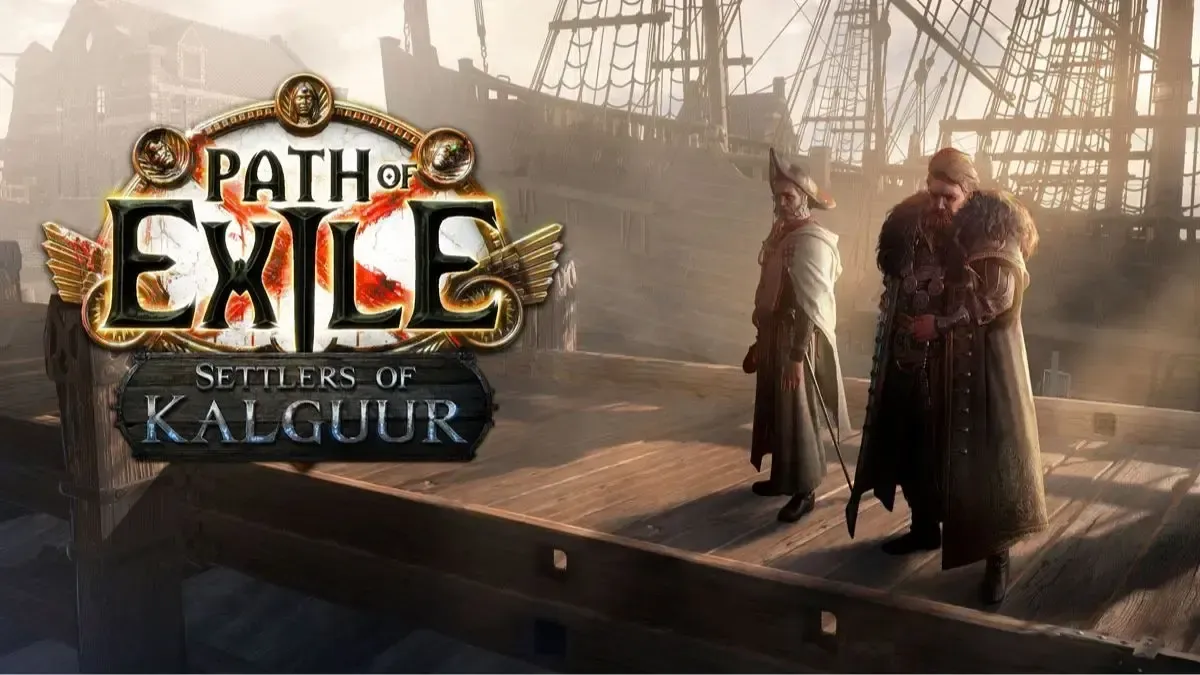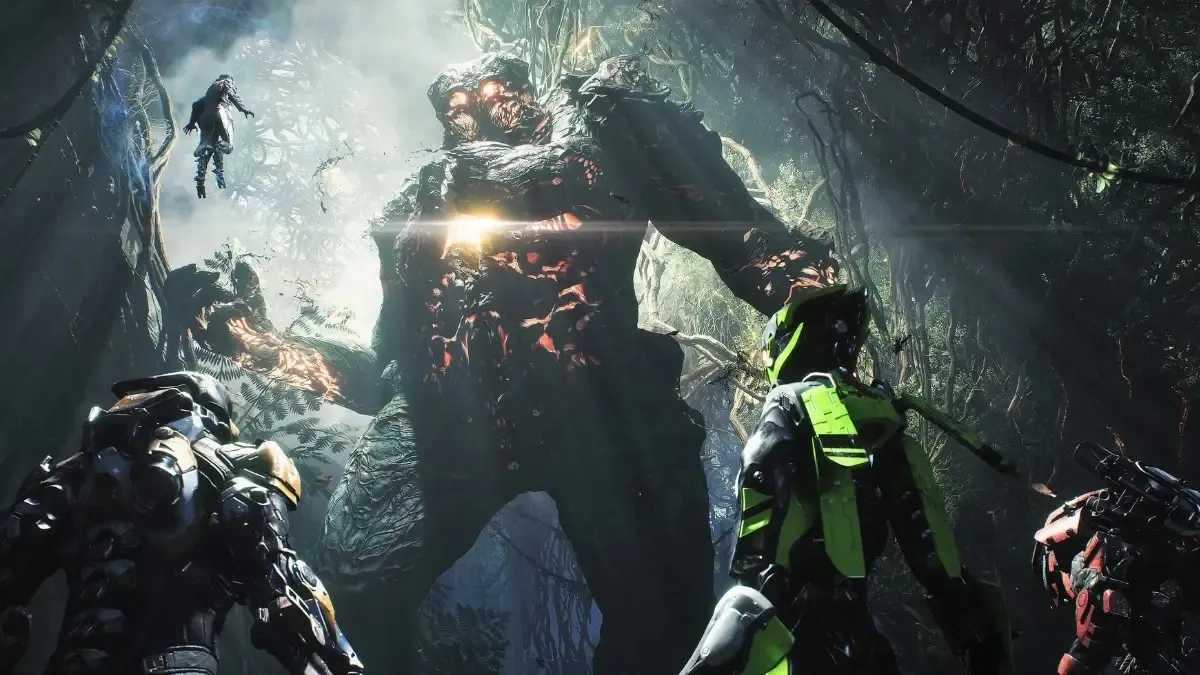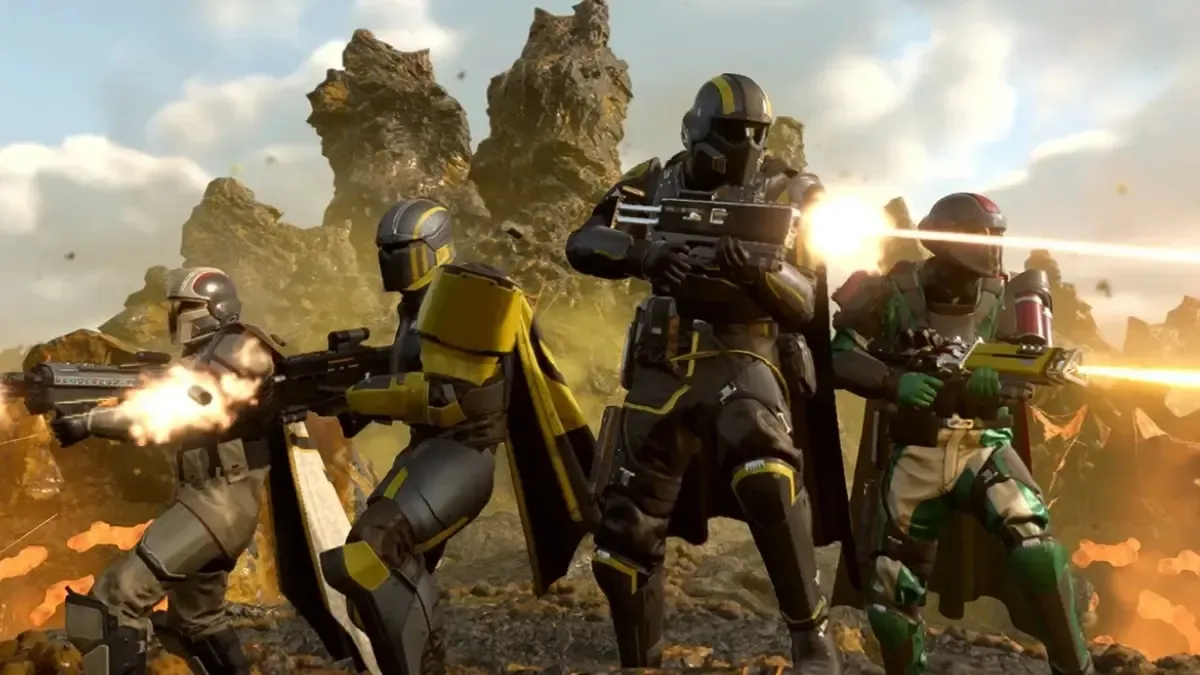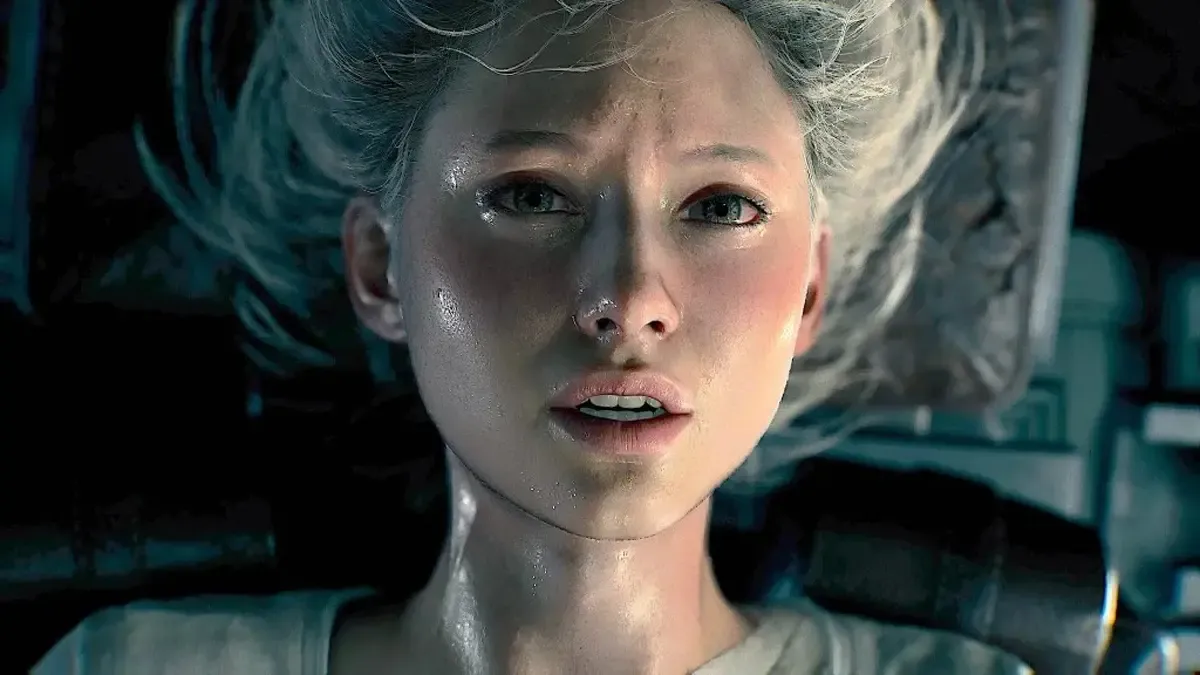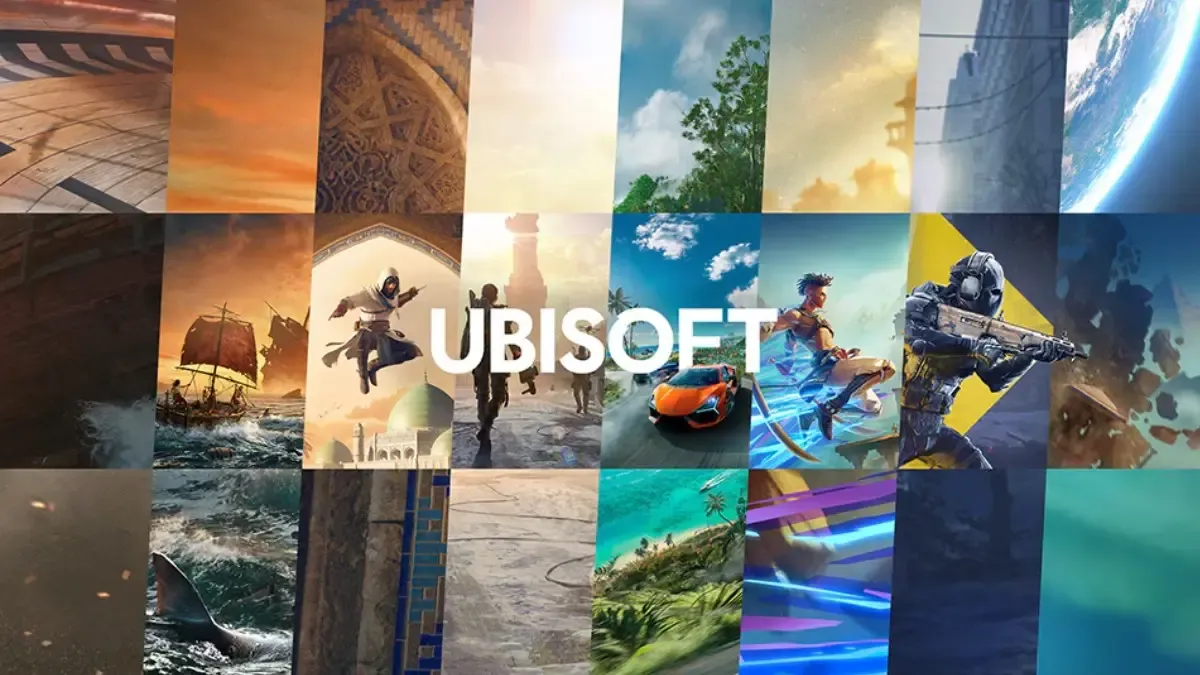Image: Grinding Gear Games
Path of Exile's game director Mark Roberts dives into the new ‘Palworld-like’ expansion.
Path of Exile and city management sims: it’s the crossover you never knew you needed, but the game’s next expansion Settlers of Kalguur is delivering anyway. This expansion introduces widespread changes to the action-RPG by making melee builds a whole lot more enticing to use, buffing and nerfing various character classes, and adding a lot more endgame content to chew on.
However, the star of the show is a clear tie-in to Path of Exile 2: the city of Kingsmarch, which players can soon build from the ground up. Kingsmarch will return in the sequel as a full-fledged location, and its citizens will have you to thank for its existence. We spoke to Path of Exile’s game director Mark Roberts to dig into the contents of this new expansion, and how it might not have existed at all without several years of Path of Exile 2 assets being ready to go - or the hit survival game Palworld!
Building up Kingsmarch
For many players, Settlers of Kalguur’s new city-building system will be the big ticket item of this expansion. Players will soon be able to help Kalguuran pioneers by constructing the town of Kingsmarch and establishing trade between Wraeclast and their homeland. To do this, they'll have to hire workers with the right skills to mine, smelt, farm and so on to keep the town prosperous. Finding the right employee for a job will largely depend on their skill and cost, but you'll also have to keep them safe and alive - because even this town isn't safe from the monsters lurking outside.
While we initially suspected that Kingsmarch owed its existence to Settlers of Catan, Mark was quick to dismiss the idea, calling it a, “pure coincidence.” Instead, the idea to give players a city builder expansion came from, “a combination of survival and city builder games,” coming off the back of Palworld’s release. However, Mark noted that, “It was only afterwards, that we realised that this had Palworld-like elements to it. We just went from there in terms of the Palworld elements, where it's like, you're building different infrastructures, and you're trying to automate all the different services and infrastructures of your base camps.”
Grinding Gear Games couldn’t go all-in on Palworld’s gameplay without turning Path of Exile into a very different game, of course. Mark continued:
“It’s very easy to get over complicated with these elements. So we've tried to keep it not too heavy on the engineering needs. If you were to do that as its own game, you would go way more in-depth there. This isn’t so in-depth that you feel like you're not playing an action-RPG anymore. So there is a healthy balance of trying to keep it feeling like an action-RPG, while having the elements of a city builder.”
How Path of Exile uses Kingsmarch to set up Path of Exile 2, and vice versa
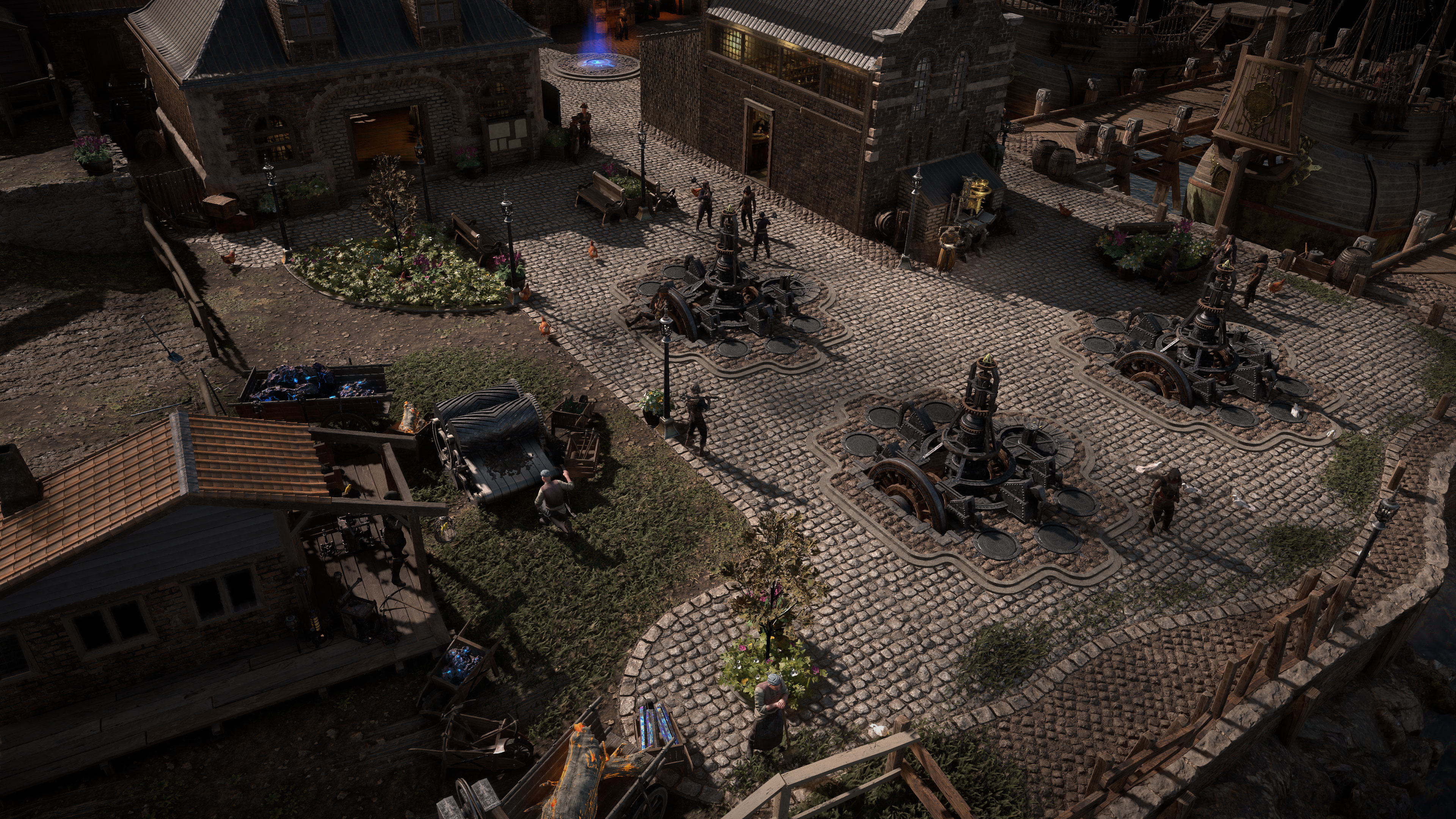
Players were not expecting Settlers of Kalguur to be a robust expansion, but that ended up being the case anyway. When asked if this expansion is meant as a last hurrah of sorts for the game before its sequel arrives in early access later this year, Mark was quick to deny the idea unequivocally. In planning the expansion, Mark had the same objective he has for, “every single expansion for this game and every future expansion for Path of Exile,” which is for it to be, “the best it can with the timeframe we have.”
The team does not intend on easing up with future expansions, either. Mark confirmed that he intends for, “all future Path of Exile expansions, even when Path of Exile 2 is released, to match this level of scale. Ideally, we can keep doing it. There will be ebbs and flows with resources moving around, but I'm always going to make do with the resources we have. I'm going to push that as far as I can every single time without question.”
This isn’t to say that Settlers of Kalguur wasn’t directly impacted by Path of Exile 2, however. In fact, it owes a hell of a lot to the sequel's development. “What takes the most amount of time when it comes to development is the fact that we have to create all the art from scratch,” Mark explained. “Everything has to be handcrafted, so when you want to do a big League, it very much helps to have a bunch of artists backing it. We now have many, many years of art and assets for Path of Exile 2 though, so let's use some of those in a creative way to define a narrative. Being able to use that art allows us to do a lot more, a lot quicker.”
This doesn’t take anything away from Path of Exile 2, however. Mark argues that it actually benefits the game, because, “Kingsmarch is one town, it’s not even 1% of all of the art that’s being reused here. Now you get that narrative connection between the two games, so once you actually play Path of Exile 2, you’re like, ‘Hey, I was here when we built this town’. That's a cool feeling for the player to have, and we also get to cut so many corners with respect to actually building something that's narratively immersive.”
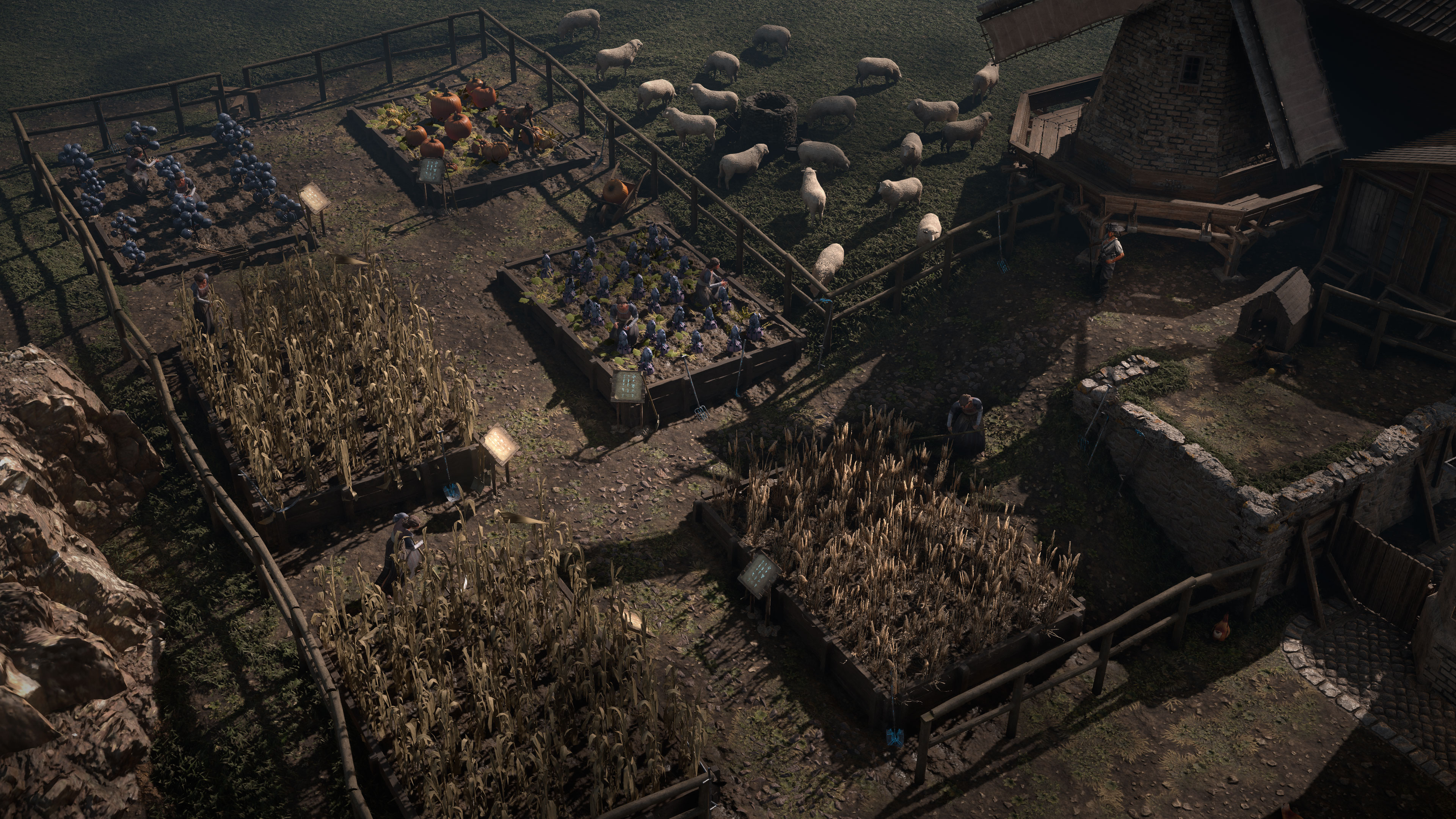
Grinding Gear Games can reskin monsters and give objects new textures, but building actual geometry on a larger scale, using the sequel’s assets, allows the developer to give players a much bigger League than usual, with more going for it than, “some monsters with a fresh coat of paint on them.” All the developer has to do is optimise, “years and years and years of Path of Exile 2 art,” to then use those assets however it likes, as long as it doesn’t, “take too much of the thunder away,” from the sequel.
Mark was also quick to add that, “I'm going to continue to do this, by the way. I'm certainly not going to stop here.” When asked if this meant players might get more tie-ins between Path of Exile and Path of Exile 2, he also answered agreeably:
“I have no exact plans now, but I very much intend to connect more of the storylines together and to build up some elements of the sequel. I really, really like that stuff. Like, a lot. And it will make it feel much more like a sequel, as opposed to just another game happening in the same world at a different point in time.”
It’s not that difficult to keep the ongoing lore of both games straight, either. Mark is one of the few people at Grinding Gear Games currently working on both games at once, along with a writer who also writes for both games. “As long as we keep that team quite tight-knit, you're not going to have things changing in a way that's diverging the world. As long as we're aware of everything going on, which we are, then you're not going to have this thing where something weird is happening, and it makes no sense. It’ll just work.”
Settlers of Kalguur’s new (and returning) systems
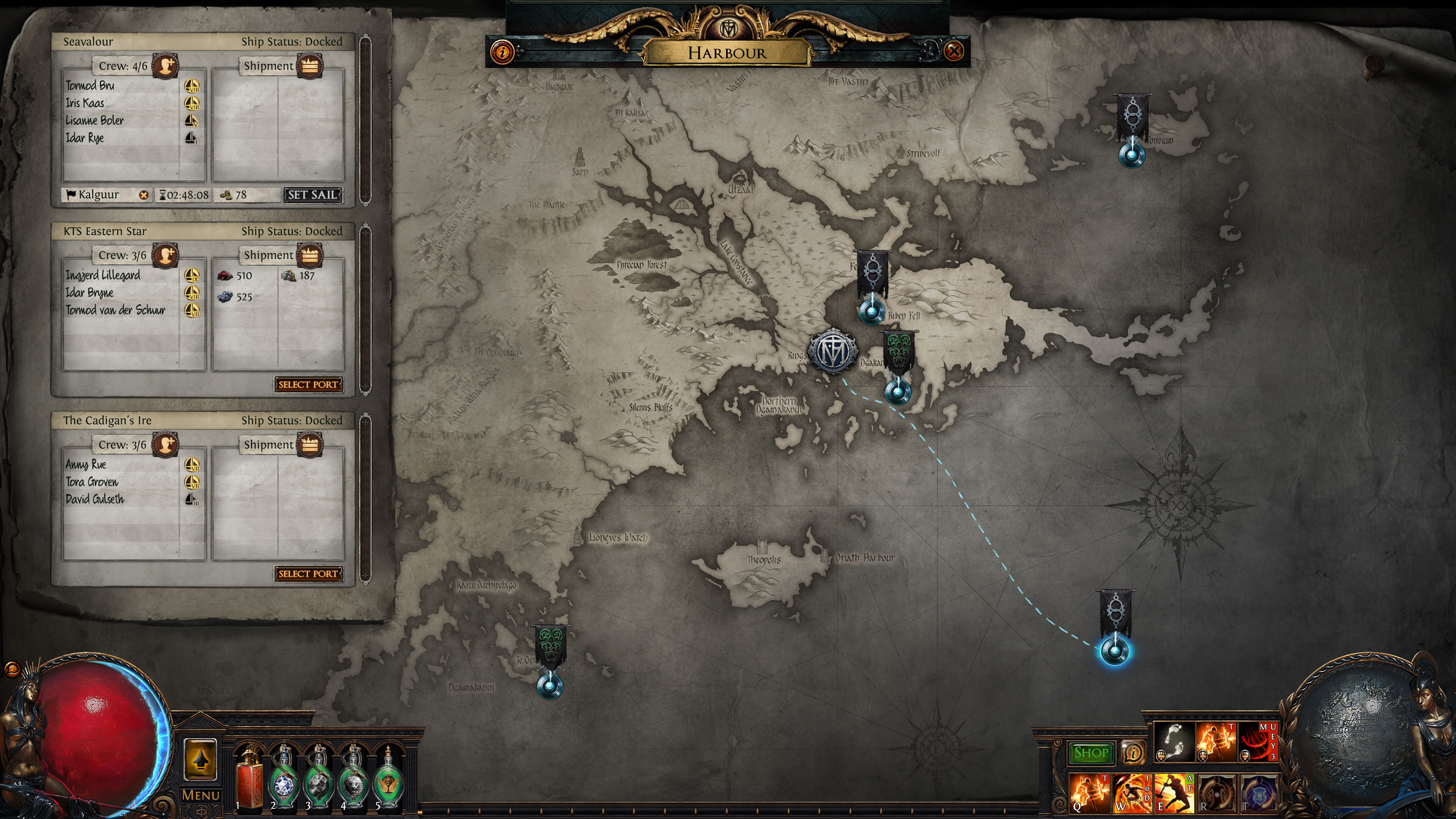
Settlers of Kalguur adds something new in the form of real-time mechanics via the shipping system. In this expansion, players can trade resources with distant regions for a bevy of loot in return, but this will require ships to be sent away for a specific number of real-world hours. This is similar to the time-gated progression players might be more used to seeing in mobile games and MMORPGs, but it comes to Path of Exile as something of an early experiment.
Mark confirmed that real-time systems like these aren’t going to become part of the base game, “without some sort of good justification.” According to him, real-time shipping represents uncharted territory for the developer, and there is a fine line between an activity taking so little time to complete that it becomes annoying for players to manage, and so much time to complete that it feels like MMO-style dailies and weeklies.
To find a sweet spot for this system, “the players have agency over controlling all the variables by hiring better or worse workers, or by upgrading.” There are close and faraway ports to make shipping runs to, with closer ones taking less time to complete for fewer rewards, while the opposite is true for faraway ports. This way, the player gets to choose how much of their actual time the shipping mechanic uses up.
As for whether we’ll get more real-time mechanics in the future, it all depends on, “how much of this league goes well or not.” Mark admitted that he, “could see it in the core game,” as he does, “like the idea of exploring it,” but the developer ultimately plans to gauge player feedback first.
Another system coming to Settlers of Kalguur is actually fairly old: recombination. When we asked Mark why the feature was returning specifically for this expansion, he answered with a simple, “Why not? It is Kalguuran technology, and we figured we’re doing a Kalguuran League. Even though Isla is handling it, she has learned from the Kalguurans, so we thought it was just a nice thematic place to bring it back.”
Gameplay-wise, this expansion also now allows players to experiment with the recombination of low-level items, as Gold is now its resource cost. When we last saw the feature, it was far too expensive to recombinate low-level items, making it wasteful to do until players got better loot. This time, the cost of recombination is directly tied to the level of an item, making it a whole lot cheaper to use for low-level items. Mark explained that, “Using gold as a resource cost is a very, very good way to allow a broader use of it, as opposed to just having it be a completely high-end, specialised crafting mechanic.”
It will take a very long time for (most) players to max out Kingsmarch
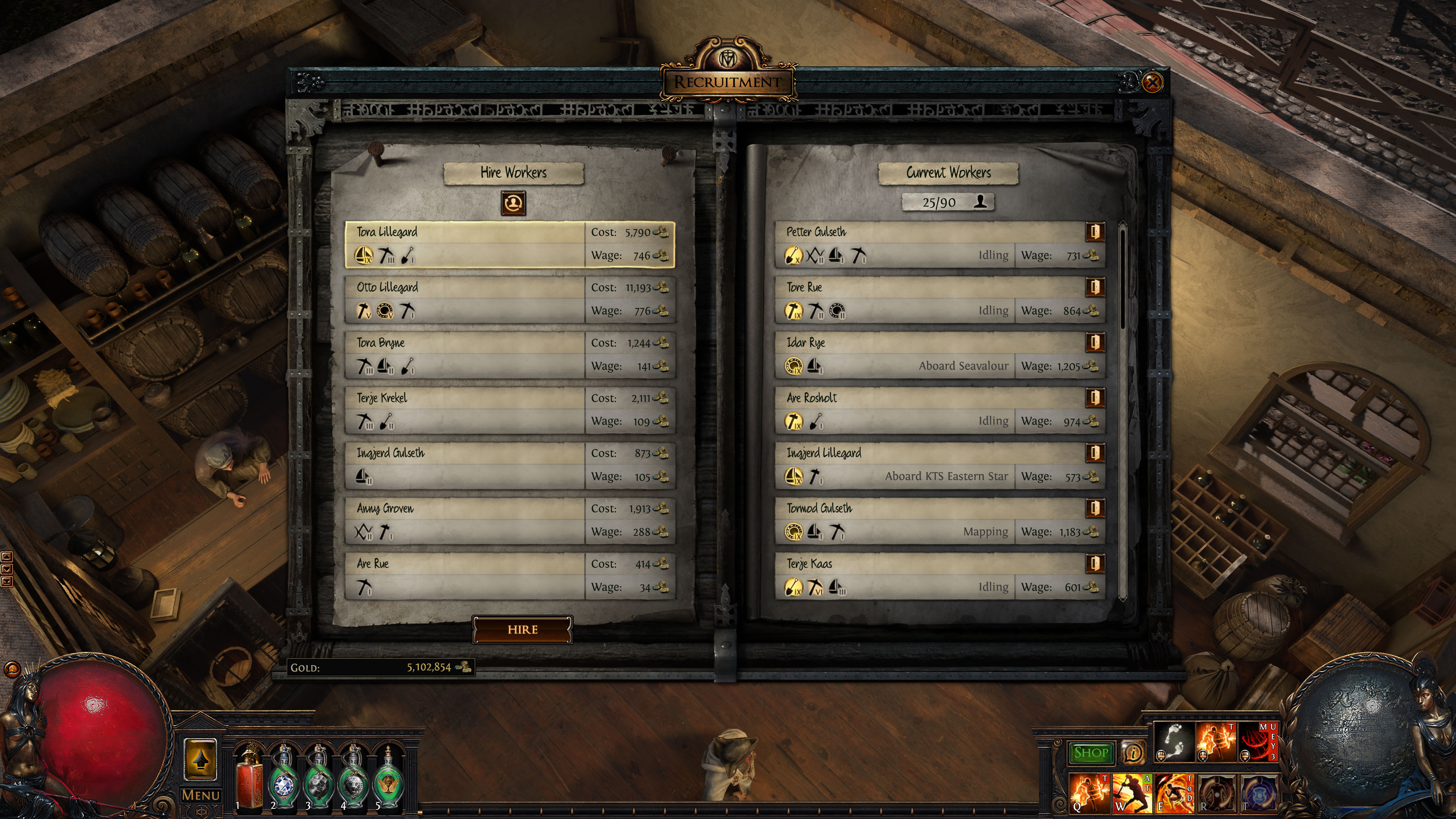
Despite Kingsmarch being built as a more laid back city builder, Mark fully expects some players to max out all of its possible upgrades in no time. “Some of our players are pretty crazy,” he laughed. “Like, they are so fast at the game, so I would not expect them to take more than a few days to get to the highest tiers of upgrades. But this is a play-at-your-own-pace League, you know? Like, do what you want. Do what you feel comfortable with and optimise the way you want."
He also explained that for most players, building Kingsmarch will take a lot more time:
“You'll have to learn a lot. Like, how big of a shipment should I send? Should I upgrade disenchanting, or should I spend this gold upgrading mining again instead? Should I hire more people, or should I do something else? There are so many different decisions to make and there's no real wrong answer. Just do whatever you feel comfortable with, what you think is right. At the end of the day, if you feel like you made a mistake, just go farm a bit more gold, just play a little bit more, then go back and do what you think is right. You won’t be overly penalised for doing anything.”
Melee characters are also getting a massive overhaul with this expansion. You'll have to read up on the upcoming update's full patchnotes here to get a clearer picture of all the changes, but just to start with, all Melee Totem Skills have been deleted from the game. Grinding Gear Games is trying to push melee gameplay away from what it calls ‘set & forget gameplay’, in an effort to encourage players to deal damage themselves using melee skills. To compensate for this loss, almost every single Melee Skill has been buffed for more damage.
Mark seemed particularly enthused by these changes. When asked what he’s most excited to see on the expansion’s release day, he told us, “Playing a melee character. It’s something we haven’t done in a long time on the live realm. I generally like to play archers and support characters, but I am finally excited to play a melee character. So are so many of our staff. It’s unprecedented for a lot of us. I’m going to try making a melee support character and get that going, using Warcries and Banners. I’m confident it will work to some degree. I’m very excited for that, honestly.”
Was this expansion affected by negative player feedback to the Necropolis League?
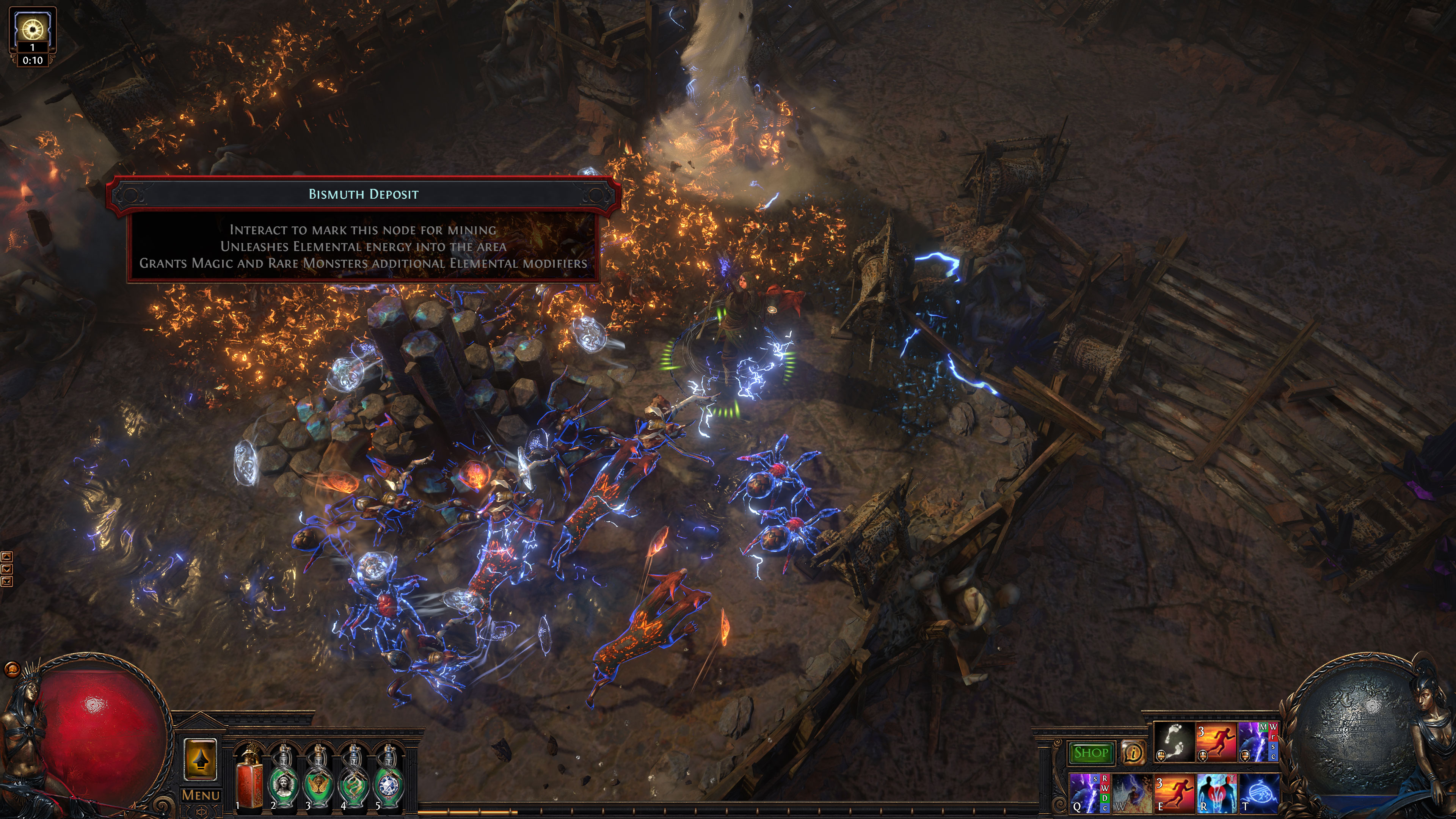
Path of Exile’s last 3.24 update, the Necropolis League, wasn’t exactly received warmly by most players. Seemingly in response, Settlers of Kalguur is aiming to be a big, bombastic follow-up that is sure to win those players back, so long as its many balance changes hit the right mark. Mark himself, however, seemed unperturbed by the way Patch 3.24 was received, and denied that it affected the development of this expansion in any way:
“It affected our internal process, but it didn't really affect our design, so to speak. I would say there's no direct correlation in that regard. But of course, within 3.24 comes a whole new set of feedback, a whole new set of things people want changed. We changed internal processes to make sure we're more careful. When you are pushing out patches this big and this quickly, there's obviously risk involved. Balance in particular, can go out a little bit volatile. And that was something that happened a lot in 3.24. So we've taken a lot more care to make sure that the stuff that we perceive to be volatile, was developed earlier in the development cycle, which I know seems like some common sense, but sometimes it's hard to know that because when you are responding to feedback, you can't rely on the feedback being there at the start of the cycle.”
Mark continued by saying that, “I think [Necropolis] still was a pretty big success. In terms of the amount we pushed out in 3.24, it could have gone a lot wrong, but we've certainly got a pretty good response rate when it comes to fixing problems. And if any arise, this time round, we're going to do the exact same thing and make sure we address everything as fast as possible.”
When asked about where the team’s focus lies in addressing player feedback, Mark determinedly told us, “Honestly, nothing is too big or too small. I want to make sure that with every single patch going forward, we address at least a subset of the major concerns the players have. Nothing is off the cards. Everything is something we want to reevaluate and get right.”
Path of Exile: Settlers of Kalguur launches on July 26, 2024, for free on PC and consoles.

